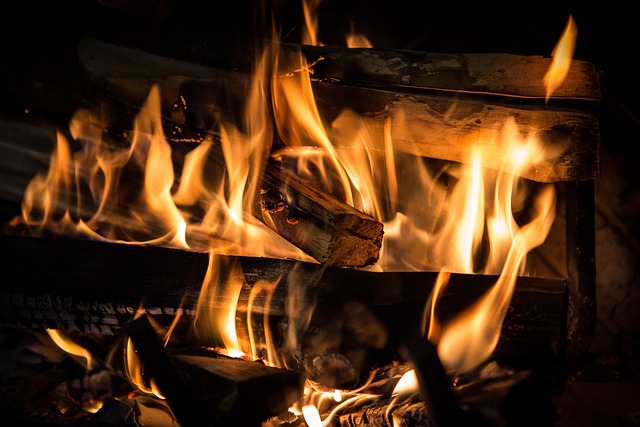Selling a home with fire damage in California requires a strategic approach focusing on water mitigation, as water exposure can exacerbate damage and reduce property value. Key steps include identifying moisture sources, assessing damage, extracting standing water, and using dehumidifiers to prevent mold growth and structural instability. Professional restoration services are vital for thorough drying and removing hidden moisture. A comprehensive inspection, immediate action, and transparent communication with buyers regarding insurance and legal obligations are essential for successfully navigating the sale of a damaged property in California.
Water damage mitigation is a critical process, especially in regions like California prone to both water hazards and fires. This comprehensive guide explores various aspects of addressing water damage, from immediate short-term solutions to professional restoration services. We delve into the legal considerations crucial for homeowners planning to sell a house with fire damage in California, ensuring you’re informed every step of the way. Understanding these processes is key to minimizing stress and ensuring a successful transaction.
- Understanding Water Damage Mitigation: The Basics
- Fire Damage and Water Exposure: A California Perspective
- Assessing Water Damage in Your Home Before Selling
- Short-Term Solutions for Immediate Water Mitigation
- Professional Water Damage Restoration Services
- Legal Considerations and Insurance Claims for Selling with Water/Fire Damage
Understanding Water Damage Mitigation: The Basics
Water damage mitigation is a critical process that involves assessing, containing, and repairing water-related issues to minimize loss and protect properties. This is especially important for homeowners in California considering the potential risks from wildfires, which can lead to significant water damage during fire-fighting efforts. When selling a house with fire damage in California, understanding and implementing effective water damage mitigation strategies becomes crucial.
The basics include identifying water sources, assessing the extent of the damage, and taking immediate action to prevent further deterioration. This involves extracting standing water, drying affected areas thoroughly, and using specialized equipment like dehumidifiers and air movers. Early intervention is key; left untreated, water damage can result in mold growth, structural instability, and decreased property value—all significant considerations when preparing a home for sale after fire damage in California.
Fire Damage and Water Exposure: A California Perspective
In California, where wildfires have become an increasingly frequent and destructive force, understanding the interplay between fire damage and water exposure is paramount for both homeowners and real estate professionals. When a home suffers from fire damage, water can play a dual role—both as a savior and a potential aggravator of existing issues. During a fire, water from fire suppression systems or nearby sources may be used to combat the flames, but this same water can leave behind significant moisture once the fire is extinguished. This moisture can infiltrate structural materials, leading to mold growth and further deterioration if not addressed promptly.
For those looking to sell a house with fire damage in California, mitigating water-related issues is crucial. Proper drying techniques, dehumidification, and professional restoration services are essential steps to ensure that any remaining water or moisture does not contribute to secondary damages. By addressing these concerns, potential buyers can be assured of the property’s safety and stability, making it a smoother process for selling homes affected by both fire and water exposure.
Assessing Water Damage in Your Home Before Selling
When considering selling a house with water damage in California, assessing the extent of the issue is crucial. Start by identifying the source of moisture and evaluating its impact on various areas of your home. Check for visible signs like mold growth, warped floors, or discolored walls, as these are indicators of severe water damage. Also, inspect less obvious places like attics, basements, and behind walls, as hidden water leaks can lead to significant structural issues.
Next, determine the age and type of damage. Recent floods or leak repairs might be more easily manageable than long-standing moisture problems that have fostered mold growth. A professional home inspector can aid in this process, providing detailed reports on the scope of water damage and necessary mitigation steps—essential information for potential buyers considering purchasing a house with water damage in California.
Short-Term Solutions for Immediate Water Mitigation
When dealing with water damage, especially in a real estate context like selling a house with fire damage in California, immediate action is crucial to prevent further complications. Short-term solutions are essential to mitigate the impact while awaiting professional restoration services. The first step is to turn off the main water supply to stop the flow of water and prevent any additional soaking. This simple yet critical step can significantly slow down potential structural damage.
Next, remove as much standing water as possible with buckets or mops. This process not only reduces the risk of mold growth but also provides a safer environment for occupants. Additionally, using fans to expedite drying is beneficial; these devices help lower humidity levels and accelerate the healing process. Remember, swift action in these initial stages can be a game-changer when it comes to preserving the home’s value during the selling process.
Professional Water Damage Restoration Services

When facing water damage, especially after a natural disaster or a burst pipe, it’s crucial to act swiftly. One of the most effective steps is to enlist professional water damage restoration services. In California, where fire damage can also lead to significant water-related issues, these experts are trained to handle complex situations. Their state-of-the-art equipment and thorough methods ensure that not only is the visible water removed, but also any moisture hidden behind walls or under floors.
This meticulous process is vital for selling a house with fire damage in California as it prevents further structural deterioration and reduces the risk of mold growth. Professional restoration services offer peace of mind, ensuring your home is safely restored to its pre-damaged condition, which is essential when aiming to put your property back on the market.
Legal Considerations and Insurance Claims for Selling with Water/Fire Damage
When it comes to selling a house with water or fire damage in California, understanding legal considerations and insurance claims is crucial. In California, real estate transactions are heavily regulated, and disclosing any known damages is essential to avoid potential legal issues. If you’re selling a property affected by fire damage, it’s your responsibility to inform potential buyers about the extent of the damage and any ongoing repairs or assessments. Failure to do so may lead to disputes post-sale, including potential lawsuits from buyer parties.
Insurance plays a significant role in mitigating these risks. Homeowners’ policies typically cover water and fire damage, but policy terms and coverage limits vary. When selling, it’s advisable to review your insurance claim history and ensure any necessary repairs are documented. Providing clear, detailed information about the damage and repair processes to prospective buyers is key. This transparency can streamline the sales process, protect you from legal repercussions, and help secure a successful insurance claim for fire or water damage in California.
When considering selling a house with fire damage in California, understanding water damage mitigation is crucial. From assessing immediate needs through short-term solutions to engaging professional restoration services and navigating legal considerations, each step plays a vital role in minimizing impact on your sale. By following these guidelines, you can ensure that any water or fire damage is properly addressed, enhancing the home’s appeal to potential buyers and simplifying the insurance claims process.





